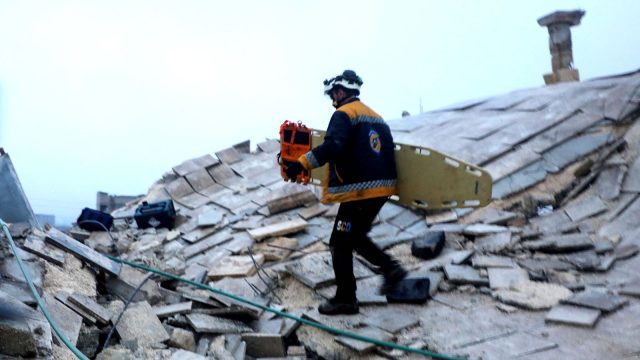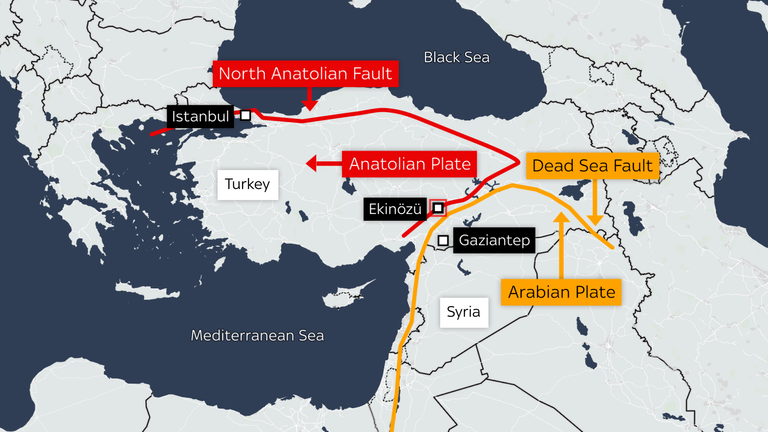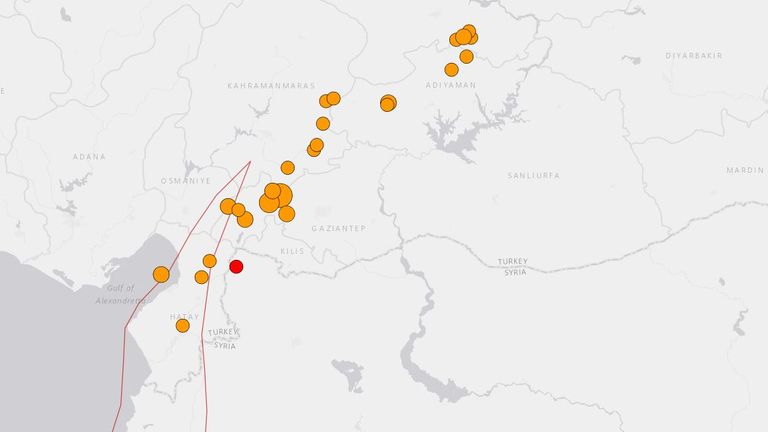As the death toll continues to rise following the 7.8-magnitude earthquake that struck Turkey and Syria, huge numbers of rescuers continue to comb through rubble in search of people left alive.
It will be a long, painstaking process complicated by the fact that the quake occurred close to the border with Syria, where years of civil war have left communities vulnerable.
Hundreds killed and thousands injured – earthquake latest updates
Numbers of people who have died have been rising throughout Monday morning, with more than 1,200 believed to have lost their lives.
Some hospitals have been damaged leaving doctors with no choice but to evacuate, while others are overwhelmed with patients filling the hallways.
Responding to any major earthquake is challenging, but there are factors that make this disaster particularly difficult for rescuers.
“The earthquake struck before dawn, when most people were in bed, asleep,” Sky News Middle East correspondent Alistair Bunkall says.
“That factor will likely add to the rapidly increasing death toll, as will severe aftershocks.”
Pictures show devastation of 7.8 magnitude earthquake
Syria after years of civil war
Much of the damage caused by the quake has been in northern Syria, a country that has been ravaged by years and years of civil war.
“The pictures that we are seeing are very similar to what you can see now in Turkey, and that is buildings being completely flattened,” Mr Bunkall says.
“A lot of them have already been damaged structurally from years of fighting, so that means that they would have been considerably weakened.
“You’ve got hundreds of thousands of refugees who are already living in miserable conditions that will be affected by this.”
Challenges accessing contested territory
Aid agencies are also likely to face difficulties getting access to northern Syria, much of which is controlled by rebel groups who have been battling the regime.
Many of these areas are held by Kurdish groups which Turkey has repeatedly threatened to invade in recent months.
Mr Bunkall, speaking on Sky News this morning, added: “It’s a region of Syria that is under no real coordinated single control, and so trying to rally any kind of rescue effort there amongst the agencies that are currently in the country and people like the White Helmets will be challenging.
“And it will be even more challenging for the international community to try and get into Syria to help.”
Damage to hospitals hampering relief effort
Harrowing pictures and videos of search teams combing through rubble from destroyed buildings show the huge scale of the devastation caused by the earthquake.
Among the buildings hit by the disaster are hospitals inside Syria, piling more pressure on the response.
The Syrian American Medical Society (SAMS) said four of its hospitals have been damaged, forcing them to evacuate.
Other hospitals run by the organisation are overwhelmed with patients filling the hallways and there is an immediate need for trauma supplies.
“Across our operational facilities, we’ve been receiving victims of the quake as they come into our hospitals while simultaneously working to guarantee the wellbeing of our over 1,700 staff in Syria, and 90 at the epicentre near Gaziantep, Turkey,” said SAMS President Dr Amjad Rass.





















